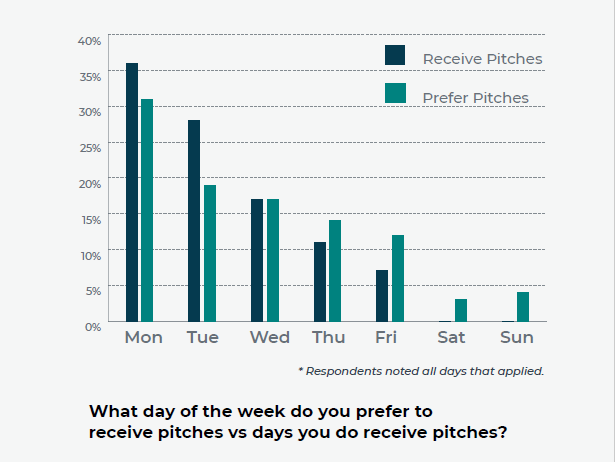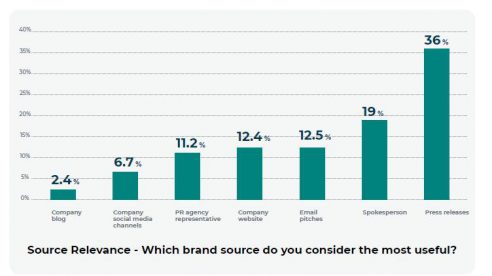At a time when journalists are cranking out stories at a rapid pace to keep up with the seemingly never-ending flow of coronavirus news, Cision continued to collect data from the editors and reporters on the front lines to release its “2020 Global State of the Media” report.
Right now, the relationship between PR professionals and journalists is more important than ever, and Cision’s “2020 Global State of the Media” data highlights how we, as PR professionals, can improve our relationships with members of the media, especially during these challenging times. The report is the result of surveying more than 3,000 media employees from 15 countries who work in print, broadcast, online and social media.
As we continue to navigate through the uncertainty of COVID-19 pandemic together, take a look at the three key takeaways from the “2020 Global State of the Media” report that can help improve and maintain media relationship.

Monday is the most preferred day to receive a pitch, but it’s also the day when journalists receive the most pitches.
With Monday acting as a weekly reset for most people, it’s no surprise that reporters would prefer to receive your pitch on Monday. However, the report notes that Monday is also the day that journalist’s inboxes are swamped. More than 35% of respondents stated that they receive pitches on Mondays. Luckily, reporters are open to receiving pitches throughout the week, and some even on the weekends. If you are looking for a way to get your pitch noticed, try pitching later in the week and the likelihood that your email will be read could increase!

Press releases are still important
Although many reporters may not simply post a press release they receive, many believe that they are one of the more helpful brand resources when crafting a story. When asked which brand source they consider most useful, 36% of those surveyed said press releases, more than spokespeople, email pitches and the company website.

In the eyes of reporters, shorter pitches are better pitches.
Get to the point. The report found that only 1% of respondents consider 75-100% of the pitches they receive as relevant. So how can we change that? According to journalists, say less. Surveyed participants revealed that many pitches they receive don’t get to the point quickly enough. With shortened deadlines and less staff, journalists are trimming the fat in their inboxes. One respondent offered this suggestion for getting your pitch noticed, “Put your point in the first five words.”
One theme that continued throughout the entire report is the importance of personalization. Reporters aren’t interested in cookie-cutter press releases or mass pitches. The more you can tailor your information for their audience, the more likely they are to respond.
Moving forward, it’s important to continue nurturing these relationships with the media, especially now. Be helpful, be resourceful and most importantly be patient, we are all facing challenges in trying to figure out what is next.
Want more information? Read the full report here.


